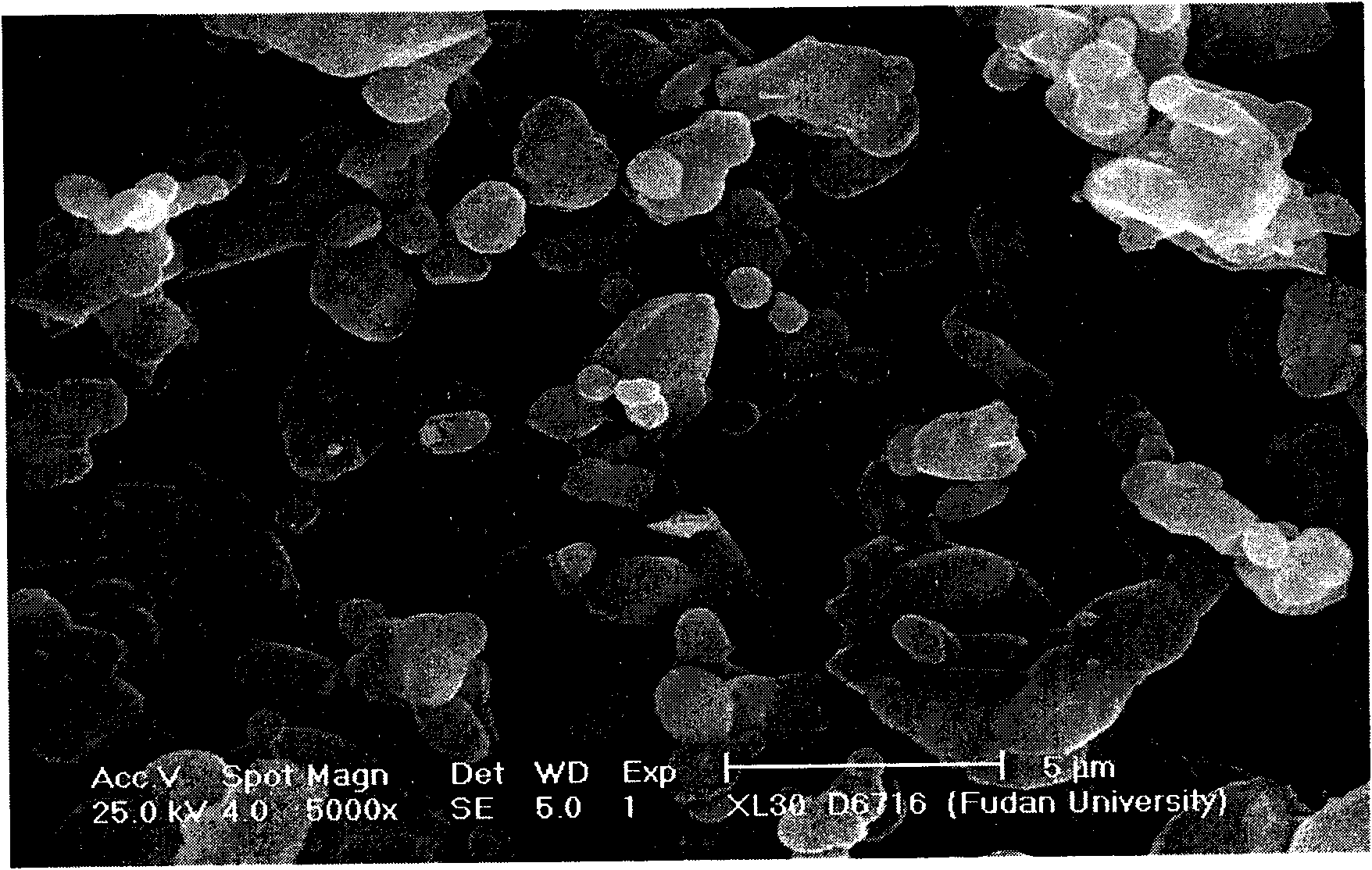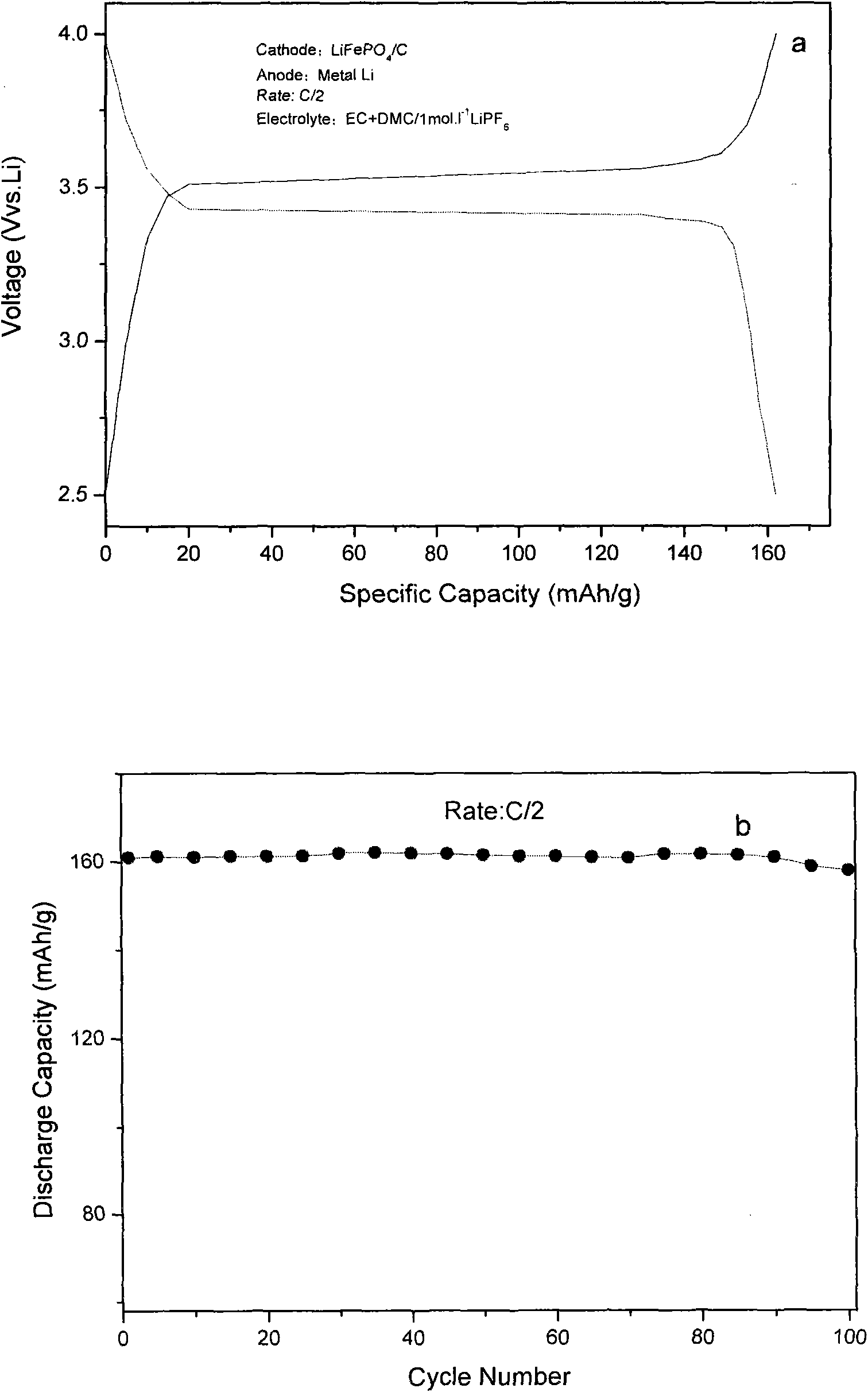Method for improving electric conductivity of lithium iron phosphate battery anode material
A technology of lithium iron phosphate and battery positive electrode, which is applied in the field of electrochemistry and can solve problems such as controversial and uncertain
- Summary
- Abstract
- Description
- Claims
- Application Information
AI Technical Summary
Problems solved by technology
Method used
Image
Examples
Embodiment 1
[0029] Synthesis of lithium iron phosphate material
[0030] (1) Raw material preparation
[0031] Weigh respectively 114g (99.9%) of industrial battery grade ferrous oxalate, 73g (99.5%) of ammonium dihydrogen phosphate, and 24g (99.9%) of industrial battery grade lithium carbonate;
[0032] (2) mixed
[0033] Mix the above-mentioned materials weighed in a circular container, then add acetone, and the volume ratio of the material is 2:1, stir well until there are no bubbles, and then continue to stir for 2 hours;
[0034] (3) Ball milling
[0035] The dried above-mentioned materials are ball-milled in a common centrifugal ball mill at 500 rpm for 10 hours, and the particle diameter is less than 5 microns;
[0036] (4) dry
[0037] The ball-milled samples were dried in an ordinary oven at 108°C for 10 hours until dry;
[0038] (5) Calcination
[0039] The ball-milled material is placed in a high-temperature tube furnace, calcined at 350° C. for three hours and at 600° C....
Embodiment 2
[0042] Button battery manufacturing process,
[0043] (1) slurry preparation
[0044] Weigh lithium ferrous phosphate material: carbon black: PVDF=0.8:0.1:0.1, add lithium ferrous phosphate to an agate mortar and grind, add carbon black, mix for 10 minutes, place in an oven and bake at 78 degrees Celsius After 1 hour, add PVDF, add a certain amount of NMP, and stir for 1 hour;
[0045] (2) coating
[0046] Put the 20 micron thick aluminum foil for lithium-ion batteries on the smooth surface of the coating machine, then flatten it, pour the slurry into the coating machine for coating, ensure that the slurry is evenly distributed on the aluminum foil, and the thickness is 200 microns ;
[0047] (3) drying
[0048] Put the aluminum foil coated with lithium iron phosphate cathode material in a common drying oven and bake for about 10 hours to dry completely;
[0049] (4) Rolling
[0050] The dried lithium iron phosphate aluminum foil is compacted with a gap of 100 microns on t...
PUM
| Property | Measurement | Unit |
|---|---|---|
| thickness | aaaaa | aaaaa |
Abstract
Description
Claims
Application Information
 Login to View More
Login to View More - R&D
- Intellectual Property
- Life Sciences
- Materials
- Tech Scout
- Unparalleled Data Quality
- Higher Quality Content
- 60% Fewer Hallucinations
Browse by: Latest US Patents, China's latest patents, Technical Efficacy Thesaurus, Application Domain, Technology Topic, Popular Technical Reports.
© 2025 PatSnap. All rights reserved.Legal|Privacy policy|Modern Slavery Act Transparency Statement|Sitemap|About US| Contact US: help@patsnap.com


